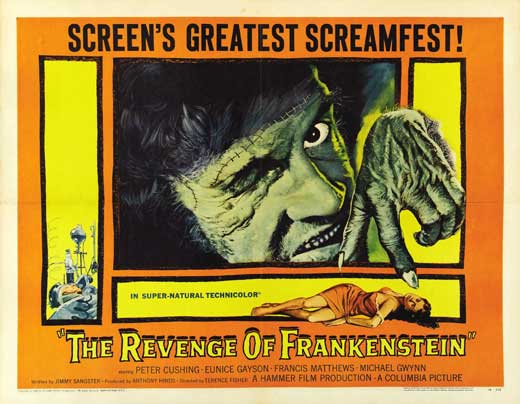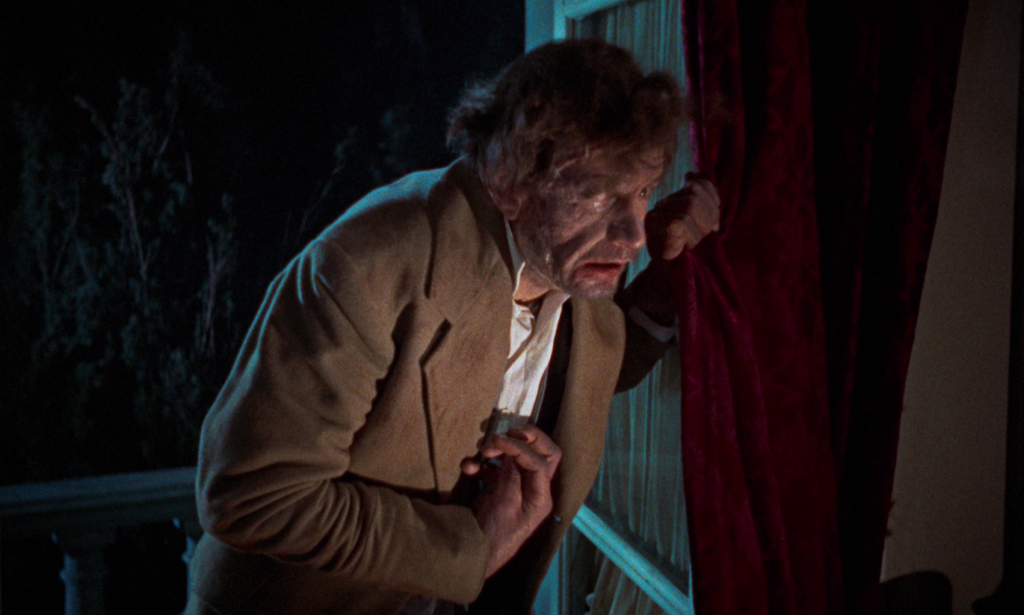
It’s possible that The Revenge of Frankenstein (1958) is Hammer’s best Frankenstein movie. This is a high bar to clear – from 1957 through 1974, the Peter Cushing-led series is for the most part more interesting and intelligent than the other cycles produced by Hammer. Revenge was Hammer’s first proper horror sequel, and the beginnings of what would eventually rival the legendary Universal Studios monster films, which also toyed with continuous narrative. Here we have returning screenwriter Jimmy Sangster picking right up where Hammer’s smash hit The Curse of Frankenstein (1957) left off – released only the previous year and as fresh as warm body parts, continuity was important – with Baron Frankenstein (Cushing) ingeniously escaping the guillotine that formerly promised his execution over ending credits, bribing his way to executing and burying a priest in his stead. Then he takes up residence under a new name, Dr. Stein, in Carlsbrück, Germany, where of course he has resumed his experiments in a hospital for the poor when we pick up the action three years on. He acquires an assistant, Dr. Hans Kleve (Francis Matthews), in a brilliant and funny scene: Kleve announces privately to Frankenstein that he recognizes him and wishes to work for him; the Baron identifies this as blackmail, but is clearly as admiring of this quality as he is of Kleve’s medical ambitions – even as he polishes a large knife while standing uncomfortably, deliberately close to Kleve to make his own unspoken threats clear. Rarely has Cushing’s affinity for acting with props produced such wonderful results.
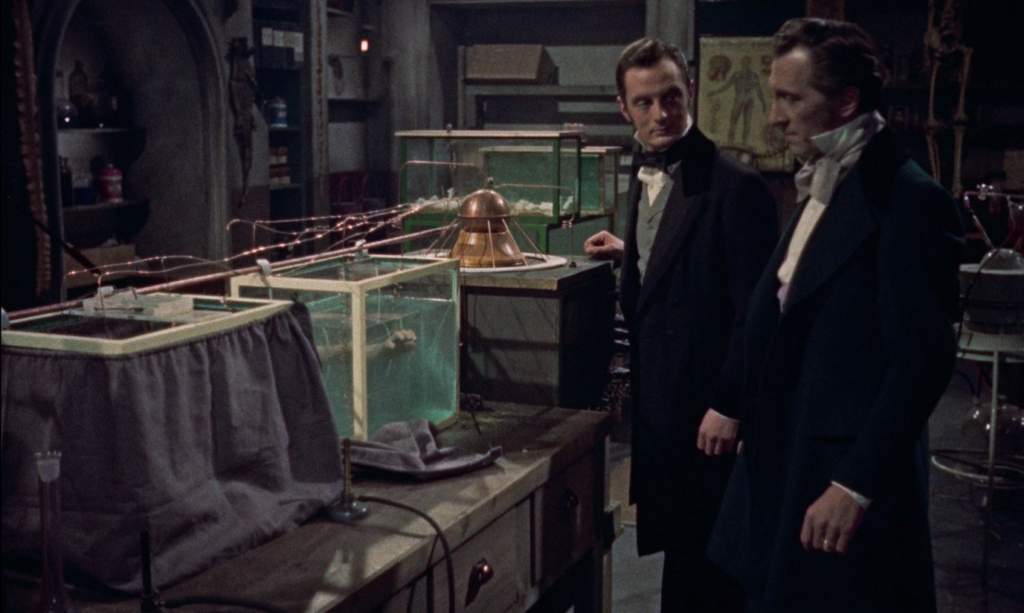
Baron Frankenstein (Peter Cushing) introduces Dr. Kleve (Francis Matthews) to his laboratory.
What makes Revenge such an unusual sequel is its resistance to creating a bigger, scarier, more monstrous monster than Christopher Lee’s patchwork-fleshed wreck from 1957. Instead, Sangster and returning director Terence Fisher plunge deeper. We are introduced to Karl (Oscar Quitak), a deformed assistant to the Baron whose promised reward is to have his brain transplanted into a perfect body (Michael Gwynn – later of Fawlty Towers – here partially stripped of his white bandages in a pin-up look that may have inspired Dr. Frank-N-Furter’s creation, Rocky). The eventual operation appears to be a success, but the plans quickly come to pieces. Karl (now played by Gwynn), who has spent his life being gawked at, flees his confinement when Kleve promises him a future as a medical marvel the whole world will want to see. His former deformities begin to exert themselves on his new body, a mental malady that transforms him physically (Gwynn is excellent here), and he even begins to crave the taste of human flesh – an unfortunate side effect the Baron had observed, but dismissed, in earlier experiments. (Cannibalism? Is that all?) The devolution of Karl provides a more substantial and affecting tragedy than what we got in Curse of Frankenstein. He’s articulate, for one thing, and can express, for a while, the pain he’s suffered in the past and the horror of what’s happening to him now. The indifference of Frankenstein and Kleve only puts his plight in starker contrast. Still, it’s a missed opportunity that the token female, Margaret (Eunice Gayson, who would become Sylvia Trench for the first two 007 films), doesn’t have much of an opportunity to insert herself into the narrative and provide some tenderness toward the monster-in-the-making. It’s as if there’s so much going on that the story can’t make room for her.
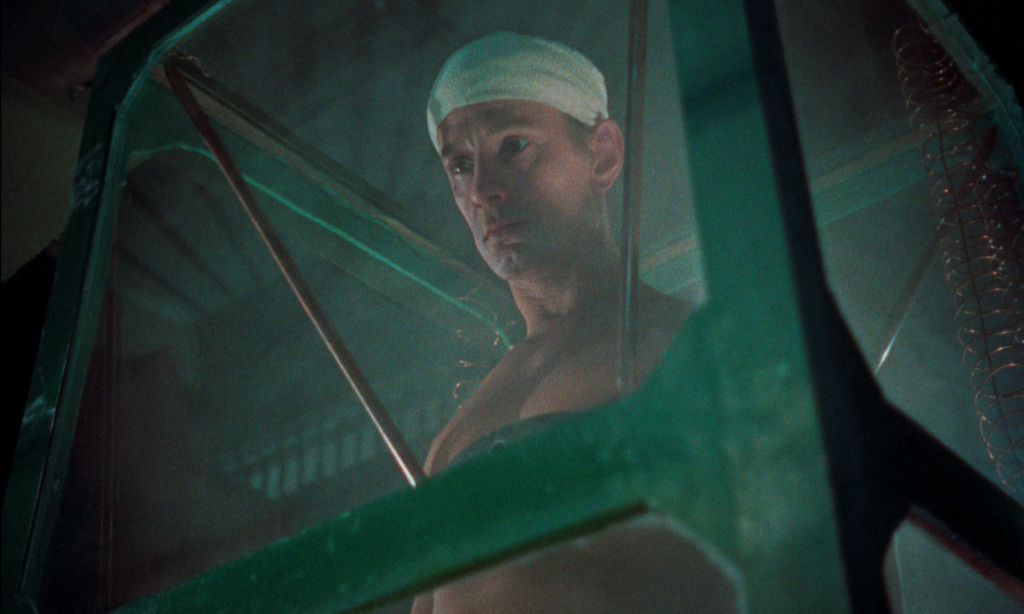
The body (Michael Gwynn), waiting for its new brain.
Cushing is excellent as always, but here he has refined his Frankenstein; if you have seen the later films in the series, this is the Baron we recognize. No longer a philanderer, he is completely devoted to his experiments at the expense of all else and deeply dismissive of his peers (if this film has an antagonist, it’s the local medical community that he spites, and who are determined to see him undone). He has a lovely moment early in the film in which he’s recognized by a man, Fritz (Lionel Jeffries), who’s robbing the Frankenstein grave. Fritz faints in fear when the Baron announces himself and collapses right into the open plot next to the decapitated priest. Cushing exchanges a dry look with Karl…and we can fill in the blanks as Fisher cuts ahead to the next scene. This Frankenstein is one who only wishes to accomplish his goals, and anything in his way is a nuisance that he can hardly be bothered with – an arrogance that almost proves his undoing later in the film. This early in the series, there’s still something refreshing about Sangster’s approach to the Baron, which paves a different path from the Universal series and its much more sympathetic Frankenstein in Colin Clive. He is also a much more clinical Frankenstein than the earlier incarnation, though here his anatomical experiments boldly cross the line into silliness when he gives us a pair of eyes floating in a tank that wobble left and right to track the Baron’s movements. (These elements of outright fantasy reach a climax of sorts in 1967’s Frankenstein Created Woman, before dialing back in later films.) Sangster also provides a twist ending that manages to be both satisfying (it’s set up very well) and deeply illogical. But Fisher has always put his best foot forward with the Frankenstein films, and his direction is confident and quietly impactful.
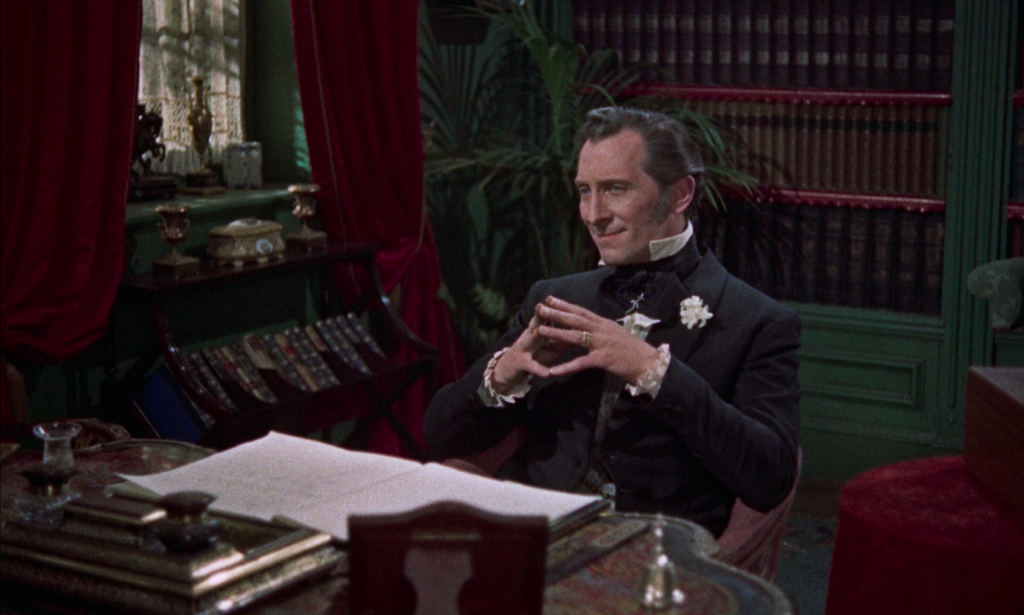
“Dr. Stein” at home.
Indicator recently released their fourth Hammer box set, which has been working off the Columbia library of Hammer films (thus far), and packages Revenge of Frankenstein with The Two Faces of Dr. Jekyll (1960), Taste of Fear (aka Scream of Fear, 1961), and The Damned (aka These are the Damned, 1962). Just on selection of titles alone, this is their best box set to date. Revenge is taken from a new 4K restoration and looks superb (please, someone do the same for the unjustly neglected Curse of Frankenstein!), and is given a generous amount of supplements which extends beyond their excellent standards to include outtakes, two audio commentaries, a look at the score, the Super 8 cut-down version of the film, and so on – they clearly recognize this as one of the more significant Hammer films to be included in their line. (And they’re about to announce a fifth set.) Released in the UK, it’s region-free so you have no excuse – have a Gothic good time.
